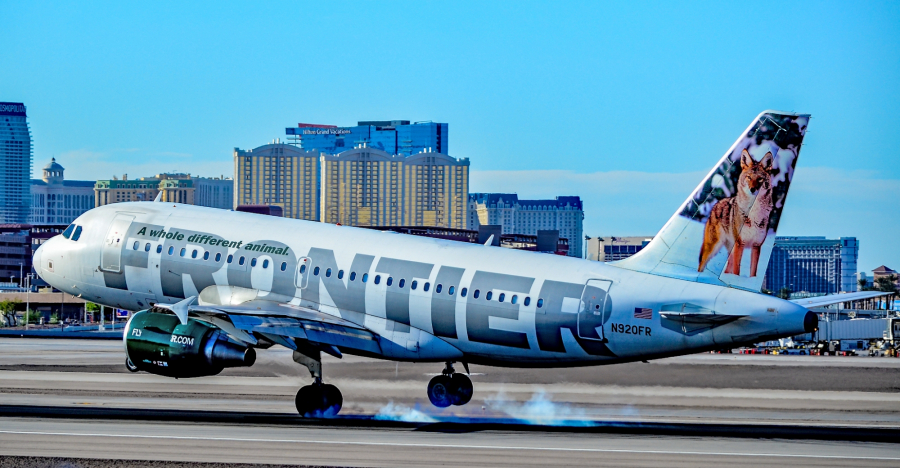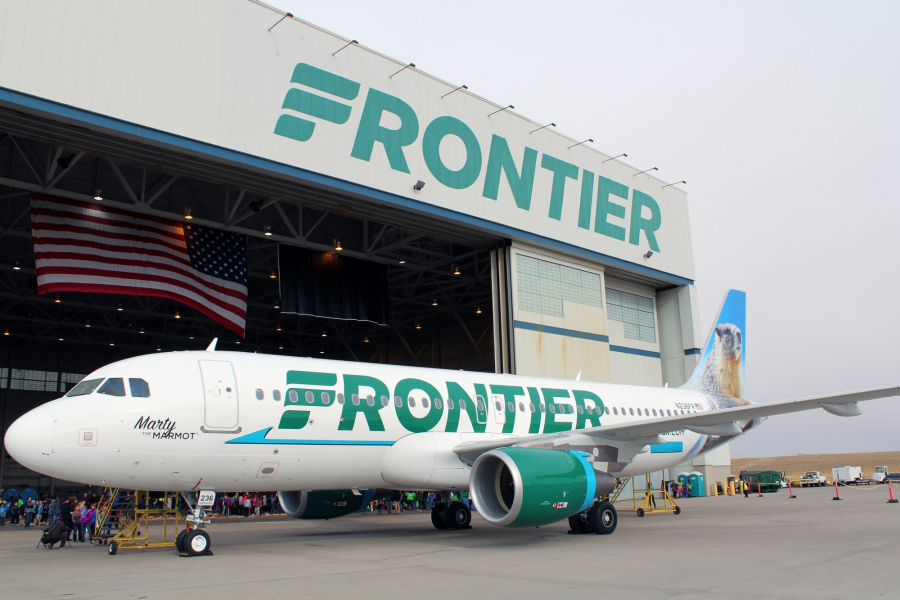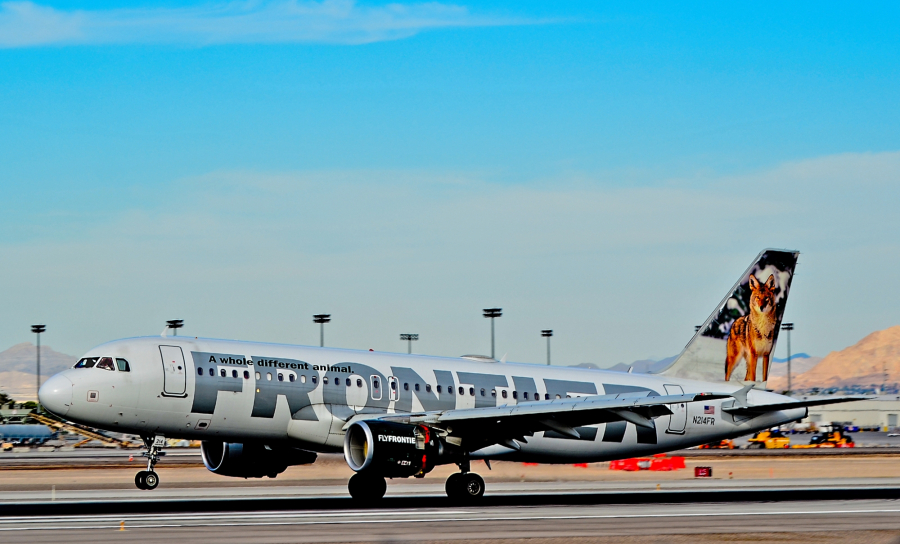After three years of restructuring the ultra low-cost carrier Frontier Airlines, Indigo Partners investment fund is selling its stock and taking the airline public. This will be the first U.S. airline IPO in three years, as Frontier is expected to debut as FRNT sometime this summer. The Frontier deal is underwritten by Citigroup (NYSE: C-K), Deutsche Bank

However this is not the first time the airline has attempted an IPO, Indigo Partners has been discussing the possibility since 2015. The last American airline IPO was in 2014, when Virgin America debuted on the New York Stock Exchange as ALK
Indigo Partners specializes in investing in young low-cost airlines. Its investment portfolio includes the Hungarian airline Wizz Air, Spirit Airlines
Indigo Partners bought Frontier Airlines in 2013 for $36 million ($145 million including the airline's debt). The last owner was Republic Airline. Under the name Republic Frontier, the airline had its hub in Denver, Colorado, operating regional flights for Embraer E-Jet. After buying the small airline from Republic, Indigo Partners made William Frank president of the airline. A veteran of the low-cost airline business, they gave Frank the task of turning Frontier Airlines into a Ultra Low Cost Carrier (ULCC).

It's easy to see that this mission was a success, at least from a financial perspective. This best deduced from the cost-per-seat (without including the price of fuel). In 2016, the cost per seat was 5.43 cents, this is down 45% since 2013, when it was 7.89 cents per seat. To compare, Frontiers biggest competitor Spirit had a cost of 5.45 cents per seat last year. This lowering of costs has a huge impact on the profitability of the company. The airline has been above the red since 2014, a huge success given that in 2008 the company was in Chapter 11 bankruptcy.
From the moment that Indigo Partners gained control of Frontier, they worked to increase the scale of the company's operations. The available seat-miles (ASM) have risen each year: 13% in 2014, 24% in 2015, and 20% in 2016. The amount of passengers served over this time period has risen from 12 to 15 million.
Lowering costs has allowed the airline to lower the price of tickets, which in turn helps increase the number of passengers. However, the revenue has remained almost unchanged. In 2014 the company took in $1.6 billion, and in 2015, that number was $1.7 billion. The passenger revenues per available seat-miles (known as PRASM in the industry), has fallen 50% over the last three years due to reduced ticket prices. In 2014, the PRASM value was at 10.77 cents and it has since dropped to 5.38 cents (2016). Yet it should be noted that this number only includes ticket sales, and not additional services, which make up an increasingly important part of airline revenue (known as ancillary revenues). The total ASM revenue was 12.92 cents in 2014 and dropped to 9.33 cents in 2016.

This revenue structure is typical of low-cost airlines and is a result of lowered fares. Frontier Airlines customers can buy just the flight, or choose between two bundles of additional services. The first, The Works, offers baggage check, a choice of seat, priority boarding, and the possibility of cancelling or changing a flight. The Perks, offers the same, without the possibility of cancellation or flight changes. Competitor Spirit Airlines has a slightly different approach to "perks": you buy each of these additional services separately. For Spirit Airlines, these additional services make up 50% of revenue, while Frontier trails slightly behind with additional services making up 42% of all revenue. That's an ancillary revenue of $51.87 per passenger for Spirit, and $48.57 per passenger for Frontier.
It's worth noting that falling ticket prices are not only caused by this new business model. Two other factors are cheap oil and an oversupply in the U.S. aviation market. Overproduction has lead to stiff competition between the major U.S. airlines, and the introduction of "Economy Basic" by the big three, American Airlines
In the case of Frontier, costs were also lowered by replacing their planes: the small and costly Embraer was replaced by the larger Airbus A319 and A320. The company currently uses 66 aircrafts: 18 Airbus A319s carrying 150 passengers, 25 Airbus A320s that fit 180, 7 Aitbus A320neos (186 passengers), and 16 Airbus A321s that carry up to 230 passengers. Frontier has plans to further renew and expand its aircraft offerings. They've ordered 78 more aircrafts: 18 A319neos, 55 A320neos and 4 A321. These aircrafts will be delivered over several years, the expansion moving forward at an even tempo until 2026. This year Frontier expects to get five planes, in 2018, nine, and from 2019-2022, 11 planes yearly.

The flight network has also changed significantly over the last several years. After years of using a hub-and-spokes method with a Denver base, Frontier has switched to a point-to-point model. Denver is still the most important city in the network, and yet it has lost its essential status. Back in December 2013, 90% of connections terminated in Denver, and now that number is down to 45%. This is not due to lack of flight offerings, but to the company's general expansion. Frontier's second largest market is Orlando, it offers 29 routes to the Florida city (from Denver it offers 35). Also big destinations are Las Vegas with 16 routes, Phoenix with 13 routes, Chicago with 11 routes and Philadelphia with 10 routes.

The strategy to creating new connections is to target rich or poorly-served markets, offering low prices that stimulate traffic. This affects the type of passengers who use Frontier of course: 51% are tourists and 42% are VFR (visit friends and relatives). Only 7% are high-paying business travelers. Frontier is focused on medium markets: it handles 28 of 43 medium-sized markets in the U.S., focusing on the Mountain States (i.e. states lying in the Rockies). That's why the aircrafts are painted with mountainous scenes, often with wildlife painted onto the rudder.
According to analysts from September 2015-2016, 500 million passengers traveled on domestic routes in the U.S. Out of these, 300 million paid 30% more for their ticket than they would have on Frontier Airlines for a similar route. New ultra low-cost carriers have created a new market, with lower prices and more air traffic. Air traffic to cities where low-cost carriers have recently opened new connections is up 41% in the last two years.
This ability to create new air traffic, and to change the market, is due to the very low operating costs of these carriers, allowing them to seek out new, untapped markets quickly. Maintaining these low operating costs will be both the future challenge and harbinger of success for lines like Frontier.
- https://www.bloomberg.com/news/articles/2017-03-31/no-frills-airline-frontier-files-for-u-s-initial-offering
- https://centreforaviation.com/insights/analysis/frontier-to-celebrate-ulcc-transition-with-an-ipo-intensity-grows-in-the-us-competitive-landscape-336790
- https://centreforaviation.com/insights/analysis/ulcc-frontier-airlines-needs-to-emphasise-newfound-stability-ahead-of-a-potential-ipo-273382
- https://centreforaviation.com/insights/analysis/frontier-airlines-and-the-network-challenges-starting-and-leaving-routes-as-us-ulcc-dynamics-shift-290925
- https://centreforaviation.com/insights/analysis/frontier-airlines-on-time-performance-hiccups-in-summer-2016-ipo-still-in-abeyance-304178
- https://centreforaviation.com/insights/analysis/more-nuanced-network-changes-for-spirit-airlines-as-basic-economy-pricing-sets-in-332849
- https://www.bloomberg.com/news/articles/2017-02-22/spirit-air-ceo-sees-no-frills-seats-backfiring-on-largest-rivals
- http://www.airfleets.net/flottecie/Frontier%20Airlines.htm














